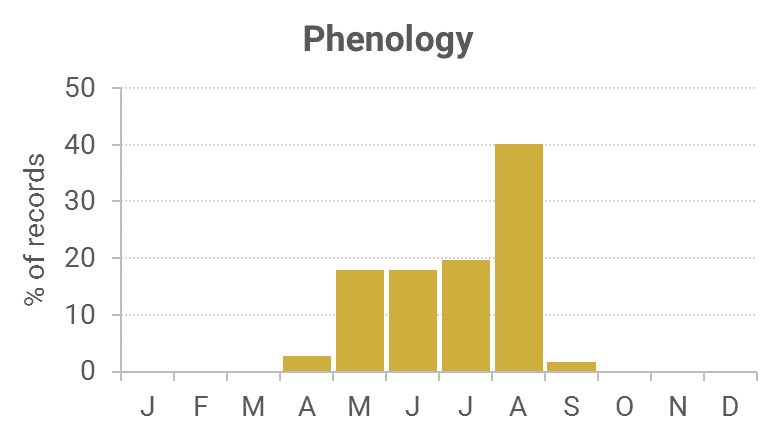Identification
Great care is needed in separating this species from the red-banded form of the Dark-barred Twin-spot Carpet. Use the following criteria: The notch in the inner edge of the median fascia of the forewing near to the costa mentioned in Skinner (1984, 1998) and Waring et al. (2003) as a distinguishing feature of Dark-barred Twin-spot Carpet from Red Twin-spot Carpet has been proved not to be a reliable feature as both species can show it. The chalky-white edging to the brighter cross-band on the forewing is much thicker than in X. ferrugata which usually has off-white or buff edging which is sometimes hard to detect. The red central fascia tends to be mottled in this species, whereas in the typical form of ferrugata it is usually more uniform. The underside is generally paler and more boldly marked, with the narrow pale post-median fascia more prominent than in ferrugata, especially on the forewing. Some moths may be indeterminate and would require their genitalia checking.
Life cycle
One generation. Overwinters as a pupa. Larvae are present July and August.
Larval foodplants
Bedstraws and Ground-ivy.
Habitat
A wide variety.
History
First recorded in Dumfries and Galloway in 1862 in VC72 near Dumfries by Lennon who stated that it was ‘very common’. First recorded for VC73 in 1870 Colvend parish by White and for VC74 in 1898 at Corsemalzie by Gordon who noted that it ‘frequently came to light and could be found occasionally by beating’.





